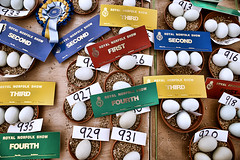To Boldly Glow: Experience Design without Borders
When creating user experiences, you need to understand the problem you’re designing a solution for. You’d better engage the users, the customers and stakeholders. You’d better evolve those insights into concepts, journeys, information architectures and design frameworks. You’d better work with the best build and delivery partners.
Most experience design agencies are set up to be able to do exactly this. Most experience design agencies do it pretty well. Mostly
Commoditisation of service offerings
However, as the experience design industry approaches a critical mass, such that it is able to commoditise its service offerings, those services cluster into a set of repeatable, predictable and marketable objects, like practice moths around a service flame. Some agencies might focus on the research cluster. Some might prefer to lead with the design and build cluster. Some might really be able to deliver them all as an integrated experience design offering.
But we’re evolving into digital utilities.
While those commoditised experience design services help clients and agencies agree on deliverables, costs and timelines, the resulting engagement might be less collaboration, more subscription. If a client really does have an articulated, addressable problem, and the service offerings have evolved to the point that we can deliver great user experiences without too much operational overhead, thank you, then everybody is happy. But what about the client that can’t articulate their problem? What if they don’t even have a problem? What if they just have a feeling that things could be somehow ‘better’?
Designing without borders
That’s where we need to take our experience design practice back to designing without service borders. We still gather insights. We still interpret and evolve. We still detail and deliver. But our engagement is based on our excellence in crafting experiences that delight customers and users. We don’t lead with services, we lead with design. Our designers are visionary. They understand the complexities. They’re vibrant, exciting and unique. They don’t shuffle into that workshop with brochureware, they walk in to that workshop self-aware. They boldly glow, and so they should.

